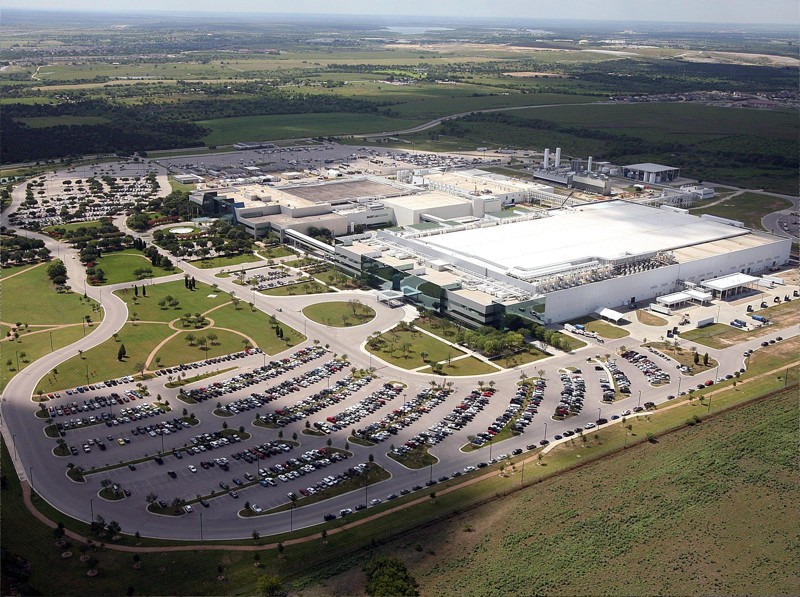
As the proverb says, trouble does not come with itself alone, it brings children. Often this happens not only in life, but also in business, production: one bad event occurs, followed by others - most often due to negative external factors.
But enough of the lyrics. As we already wrote, the shortage of semiconductor chips is gradually growing in the world. Experts estimate the volume of the deficit at 10-30%. Any additional negative factor can increase the shortage of components, which, of course, affects all other industries - the production of laptops, desktops, servers, even cars. And then it showed itself: Samsung Corporation has not yet resumed semiconductor production at its American factory in Texas.
The problem has been dragging on since mid-February of this year - then in Texas there was an unprecedented cold, which increased energy consumption many times over. The South Korean company was forced to stop the work of two factories in Austin at once. The decision was unprecedented. In addition to Samsung, NXP Semiconductors, Infineon Semiconductors, and others were forced to take similar measures.
The factories still cannot be restored to work. But in 2018, the shutdown of one of Samsung's factories for just half an hour led to a 3% decrease in global stocks of NAND flash memory. Of course, the company has since learned to adapt to such problems, but still, the period during which the factories are not working is too long.
Now the manufacturer has the resources necessary to resume operations, including water, electricity and others. But it takes time to start over. The plant is not just a conveyor that will stop or start at the push of a button. It is required to check everything, clean the systems, start some basic operations and only then sequentially resume the main production processes. Even after that, it will take time to bring production to its previous level.

At the S2 factory, whose work was suspended, chips were produced using 28-nm and 65-nm technical processes. This facility develops various products for its own division of the company. It, in turn, produces controllers for SSDs, chips for Tesla and Renesas, communication chips for Qualcomm. And that's just what is well known. Surely, the factory produces and supplies chips to other companies as well.
According to experts, it will not be possible to restore the operation of a production facility of this size quickly. The difficulty is also in the fact that very specific materials are used for production: liquids, metals, gases and other chemical elements and compounds. Their storage requires special conditions, which are not currently available. In general, resource reserves will have to be created almost anew. Accordingly, all customers of the company will have to wait while the corporation will establish production of products.
Samsung and its customers can order the parts they need from other locations. But the transfer of part of the production to other locations causes a number of problems.
First, it is difficult for a factory already working at full capacity to carve out additional capacity for a sudden order. Not all factory owners who can satisfy the companies' request are interested in short-term orders.
Secondly, the cost of semiconductors is already high. With the transfer of production, it will grow even more.
Third, companies based in Taiwan and other Southeast Asian countries are now having problems with inputs, including ABF. This means that such companies will not be able to increase production, in any case, we are not talking about an increase in production by tens of percent.
All this with a high degree of probability will lead to the fact that the chain of production and supply of elements will simply "break", so that consumers of chips will have to wait for their order much longer than originally calculated.
And that's not it
Most likely, the timing of the deployment by the corporation of the production of microcircuits using the 3-nm process technology is under threat. It was slated to launch in the US in 2023, completing the installation of major components in 2022. And, by the way, this factory is also planned to be located in Austin, Texas.

The new industrial facility should be Samsung's trump card in the pursuit of current industry leader Taiwan Semiconductor Manufacturing Co. (TSMC). But if the region's weather conditions continue to change and power shortages become the norm, it is unclear if Samsung will be able to operate normally.
Now the construction of the factory serves as an opportunity to kill two birds with one stone: to catch up with a competitor, and to receive benefits from the American government. The corporation even hired people in Washington to lobby for the deal. If companies are provided with tax breaks or even subsidies, it will become easier for them to develop and increase capacity.
Be that as it may, the company itself is doing well. She has a lot of orders, and their volumes continue to increase. So, for example, it was Samsung who was responsible for the production of GPUs for the latest RTX 3070, RTX 3080 and RTX 3090 video cards using the 8nm process technology. It was a huge order worth hundreds of millions, maybe more than a billion dollars.
The problems are not just for the industry, which, due to the volume of orders, cannot cope with their fulfillment and does not know where to spend excess profits. Problems are faced by those who are associated with this industry, including vendors of laptops, servers, desktops, cars, etc., and therefore we have with you.
